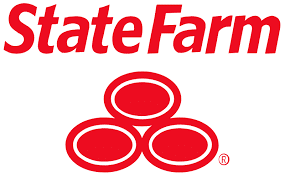This is a type of permanent life policy. It’s very beneficial in the sense that it lasts a lifetime or as long as you want it to. When comparing universal life policies vs whole life, a universal life policy is a better policy than whole or term life insurance because of the flexibility it offers in payment. A universal life policy is also an effective way of building investment gains with tax-free advantages. While universal life insurance gives you the liberty to raise and lower your premium within certain limits, it can also have an adverse effect on your cash value and the size of your death benefits. In this post, we are going to unravel everything about universal life insurance, how it works, the various types of UL eg. indexed UL, etc.
Universal Life Policy Definition
Like a whole life insurance policy, universal life insurance provides coverage from the time of purchase until the insured person’s death occurs. “Universal” refers to the fact that it’s a product that anyone can use regardless of their specific needs. There is no limit to what universal policies may accommodate, from high to cheap rates, to fluctuating coverage options.
The interest rate on the cash value account fluctuates depending on the market’s performance.
According to LIMRA, a financial services industry-funded research organization, universal life insurance products have the biggest premium market share. A total of 34% of life policy premiums are paid through indexed and fixed universal life. And another 13% comes from the variable universal life.
Types of Universal Policy
The various types of the universal policy include the following:
- Guaranteed Universal Life(GUL) Policy
- Indexed Universal Life(IUL) Policy
- Variable Universal Life(VUL) Policy
- Cash accumulation Universal Life Policy
- Current assumption UL Policy
#1. Guaranteed Universal Life (GUL)
The death benefit and premium payments of a guaranteed universal life insurance policy (GUL) will not fluctuate over time. The policy expires at a certain age you choose. It stays for as long as you own the policy. If you choose an advanced age, the premium will be higher, so you decide when the coverage ends.
Guaranteed universal life insurance is typically the cheapest form of universal life insurance available, with little or no cash value. Thus, if you’re looking for a cheap universal life insurance policy, guaranteed universal life insurance is the best option. A guaranteed universal life policy may be a viable option if you’re searching for long-term protection and don’t care about the investment gains in cash value.
Like a whole life insurance policy, you’re paying for coverage that lasts for the rest of your life and with a GUL policy, there is no flexibility in terms of premium payments or the death benefit.
#2. Indexed Universal Life (IUL) Policy
An Indexed Universal Life Policy (IUL) provides coverage for the rest of one’s life, and the death benefit and premiums can be adjusted as one wishes. If your requirements or budget change, you may be able to amend your death benefit and payments.
An IUL generally has a cash value component linked to an index of the stock market, such as the Nasdaq-100 or the S&P 500. Fixed-interest investments may also be available to you.
You pay premiums (possibly costly), some of which go toward insurance fees and costs, and the rest goes toward the cash value of your policy.
To maximize your investment gains, you must know where your money can be invested in before making a purchase. Also know that participation rates and restrictions apply to indexed universal life insurance policies. The participation rate is a percentage of the index gains that your cash value will benefit from.
Understanding the limits of your prospective investment profits is essential. Indexed universal life policies have participation and limit rates. The participation rate is a percentage of the index increases that your cash value will really benefit from. For example, if your index rises 10%, and you have a participation percentage of 50%, you’ll get 5% of that increase. Additionally, there’s a limit, which is the maximum percentage you may earn regardless of the index performance.
An IUL policy may be intriguing to someone who wishes to alter their death benefit and premiums, as well as someone who is willing to take on greater investment risk.
#3. Variable Universal Life(VUL) Policy
With this type of universal life policy, adjustment of premiums and death benefits is possible, but only within limits. Cash value investments are typically held in sub-accounts, so you’ll need to be involved in the management of these policies on a regular basis. Cash value may also come with a fixed interest rate option
You can earn good returns on your cash value by investing properly with universal life insurance, plus you also have some control over your investment choices.
Your cash value, on the other hand, could plummet if your investment options hit rock bottom. In addition, the cost and complexity of these policies are far higher than those of other types of universal life insurance.
#4. Cash Accumulation UL Policy
A universal life insurance policy intends to build up cash value quickly in the early stages of the policyholder’s life.
#5. Current Assumption UL Policy
A conventional universal life insurance policy intends to provide coverage at a reduced cost due to the fact that the death benefit is not certain.
How Universal Life Policy Works
This policy is favorable to the majority of people because of some of the benefits it offers which include; lifetime protection, cash value, flexible premiums, and tax-free advantages. Owners of universal life insurance policies who borrow against the cash value in the policy have no tax implications. These tax advantages include;
- Policy’s cash value grows on a tax-deferred basis
- Beneficiaries receive the death benefit income-tax-free.
With this said, it’s important to note that because of universal life’s flexibility and freedom, there are fewer assurances.
There are two components of universal life policy. They include:
#1. Cost of Insurance (COI)
The COI is the minimum amount of a premium payment that must be paid in order to maintain the policy in effect. Several things are combined into a single payment. Included in COI are costs for mortality and other expenses directly related to the policy’s management. The COI varies from policy to policy, depending on the policyholder’s age, insurability, and insured risk amount.
#2. Cash Value Account
Premiums paid in excess of the Universal Life insurance policy’s cost grow in the policy’s cash value. As the insured ages, the cost of insurance will rise as well. However, if the accumulated cash value is adequate, it will be enough to cover the COI increments. The death benefit of universal life insurance is not inclusive of the cash value. Admin fees and the death benefit are deducted from premiums, and the remainder is added to the account’s cash value each time a payment is made. A yearly interest rate is guaranteed for the cash value, but the insurer’s market performance will determine how quickly it grows.
UL insurance policy can be used in the following:
Read Also: WHAT IS MAP PRICING: Guide to Map Pricing policy & Why It’s Important
- Surrender value – In the event that you make the decision that you no longer need the policy, you have the option to “surrender” it to the insurer, at which point the insurer will hand over the cash value to you.
- Loan collateral – You can borrow money from the insurance company by putting up the cash value as collateral. This is the most you can borrow. The insurance company sets the interest rates for these policy loans.
- Premium payments – You can pay all or part of a premium payment with the cash value. Just remember that the policy will no longer be valid if the cash value falls to zero, so you need to keep a close eye on the amount.
As long as your premium falls within the policy’s minimum and maximum limits, you can pick how much you pay for your universal life insurance policy’s premiums.
As a general rule, many people pay the maximum premium for the first few years of coverage in order to accumulate a substantial cash value, which they can then use to pay the premiums later on in life.
Pros and Cons of Universal Life Policy
Certainly, as good as universal life insurance seems, some of its features might not be as favorable as they already appear. Hence, you need to consider the benefits and drawbacks to see if it’s actually what you’re looking for.
Pros
The major benefits of the universal life policy include:
- Cash value growth
- Flexible death benefits
- Flexible premiums
Cons
Here’s what’s tricky about the advantages of the particular policy. The same things that make it advantageous are the same things that, in turn, become its disadvantages. The following are the result of the advantages that can now become a disadvantage
- Increased risk – Volatility is a result of market rates. Universal life insurance appears to be a good option while interest rates are rising. If they fall, though, your cash value account may not perform as well as you had intended. Universal life insurance contracts usually include guaranteed minimum interest rates, which means that they won’t go below a specific level if the market falls.
- Increased responsibilities – If you don’t keep track of your account’s worth, it could become underfunded, forcing you to make a series of substantial payments to keep the policy you subscribed for.
- Taking out a cash value portion is subject to tax.
- A policy loan must have an interest on return.
- The insurance company retains the cash value of a policyholder’s account after the policyholder dies.
What Is the Cash Value of a Universal Life Insurance Policy?
The cash value of a Universal Life insurance policy receives interest at a rate that is either the minimum interest rate or the current market interest rate, whichever is higher. Policyholders can withdraw a portion of the cash value as it accumulates without impacting the guaranteed death benefit in any way.
Universal Life Policy vs Whole Life
If you pay your fixed monthly premiums, the death benefit will never decrease, making whole life insurance more stable. Although there’s no death benefit guarantee, universal life insurance, does give you more freedom. The benefit will be reduced if you take out too much debt against the policy, but you can arrange your coverage to last for longer years or your entire life. Your death benefit and the amount you pay in premiums are both adjustable.
The following table illustrates universal life policy vs whole life properly
| Universal life insurance | Whole life insurance |
| Lifelong protection, as long as premiums are paid | Lifelong protection, as long as premiums are paid |
| Cash value is available | Cash value is available but it rises in line with a schedule. |
| Interest on cash value depends on current market rates | Interest on cash value is not available |
| Premiums are flexible | Premiums are fixed |
What Are the Investment Gains From a Universal Life Insurance Policy Often Used For?
The death benefit is funded in part by the premiums you pay with universal life policy investment gains, and the remaining amount is added to the cash value of your policy, which accrues low variable interest income and increases tax-free. You can use the cash value to Reimburse your insurance premiums while you are still alive.
Who Might Choose Universal Life Insurance?
- If you’re looking for coverage that lasts your entire life – Universal life can be a good choice for you if you wish to accumulate tax-deferred savings and don’t intend to use the money for a while. You might be able to collect money from or borrow money from a universal life insurance policy’s cash value provision in a crisis.
- You have long-term savings goals – Universal life provides a death benefit to your beneficiaries regardless of when you die as long as your policy has a positive cash value.
To Wrap It Up
You can consult a PolicyGeek agent for free to get the best insurance policy for your situation. A licensed agent can help you tailor it to your specific needs to ensure that you get the most out of your universal life insurance policy.
Universal Life Policy FAQs
What is whole vs universal life policy?
The difference between whole life vs universal life policy is that whole life is permanent, while universal life offers long-term protection. With whole life, your premiums are fixed and guaranteed never to rise. As long as you continue to pay them, you can count on the life insurance benefits being paid to your beneficiaries.
How does a universal life policy work?
This policy is favorable to the majority of people because of some of the benefits it offers which include; lifetime protection, cash value, flexible premiums, and tax-free advantages.
What are the benefits of a universal life insurance policy?
The three major benefits of the universal life policy include:
- Cash value growth
- Flexible death benefits
- Flexible premiums
What are the investment gains from a universal life insurance policy?
The death benefit is funded in part by the premiums you pay with universal life policy investment gains, and the remaining amount adds to the cash value of your policy, which accrues low variable interest income and increases tax-free.






